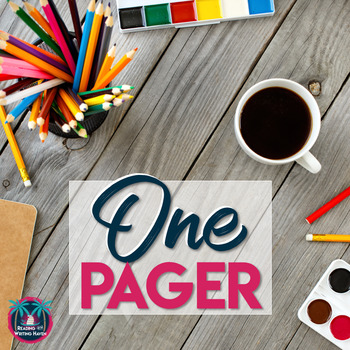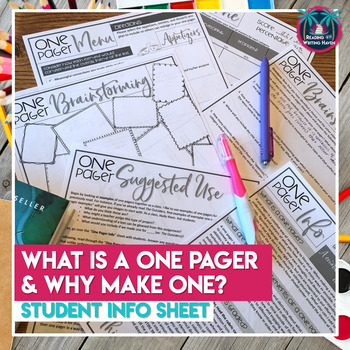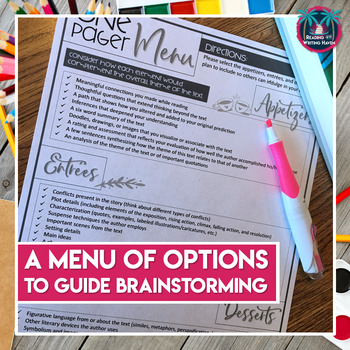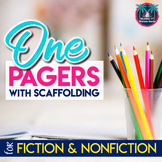Scaffolded One Pager: A Thematic Response to Reading Activity
- Zip
What educators are saying
Also included in
- So you want your students to analyze literature and informational texts, but you don't want to grade yet ANOTHER stack of essays. Why not take a creative approach with this one pager bundle? Students will be able to dig deep into literary analysis of both fiction and nonfiction texts, and they willPrice $12.50Original Price $15.50Save $3.00
Description
Are you drowning in essays? Looking for a way to have students show analytical thinking about a text in a meaningful way that won't send you to the crazy house? Try the one pager as an alternative response to literature. Not only does it encourage students to think creatively and abstractly, but also it teaches them how to use quotations, symbolism, and images to convey how they experience a text.
This one pager response to literature activity focuses on the theme of a fictional or narrative nonfiction text. Students can complete it while they are in the middle of or when they are finished reading a text. It can be used for poetry, short stories, and novels. I enjoy using one pagers as a creative response to choice reading, but they are also appropriate for whole class novels.
Included in this teaching tool, you will find:
1. suggested use and tips
2. an informational "What is a one pager?" sheet
3. a menu of possible elements to include
4. 2 brainstorming pages
5. a rubric in both PDF and editable PPT formats
6. a structured template to show students where to put information as they sometimes get confused as to how to use all of the white space
7. a student example of a one pager, including how to use the brainstorming template and questions to produce a sound one pager
You can read more about how I use one pagers in this post.
Looking for a DIGITAL one pager for literary analysis? This Google Slides resource is what you'll need!
NOTE: This one pager response to literature resource now contains an EDITABLE version so that you can adapt the requirements to fit your exact learning goals! Edits can be made in Microsoft PowerPoint.
If you find this product useful, make sure to check out these similar products:
Book Club Choice Reading Bundle
Grab and Gab Fictional Question Stems
And more here!
Stay in touch:
~~~~~~~~~~~~~~~~~~~~~~~~~~~~~~~~~~~~~~~~~~~~~~~~~~~~~~~~~~
A Couple Tips:
* Be sure to click the "follow" button that is located next to my picture so that you can hear about sales and new products!
* By providing feedback on your purchased products, you can earn points, which ultimately translate into cash toward future purchases...bonus! Plus, I'd love to hear from you.
©Reading & Writing Haven
All rights reserved by author.
Duplication limited to single classroom use only.
Electronic distribution limited to single classroom use only.






